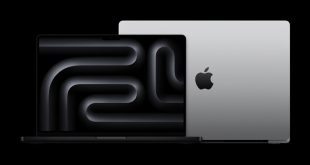Regular readers of KitGuru will have been following our stories on the Watson Supercomputer. This computer beat two world class opponents in the Jeopardy game show, scoring more than both of them put together.
Watson was able to answer complex Jeopardy questions at almost real time, however now the indications are that it will be a fantastic match as a data analytics engine for the medical community.
IBM announced this week that it is working with speech and imaging recognition software provider Nuance Communications to produce a system that can help physicians and other healthcare professionals to wade through gigabytes and terrabytes of patient healthcare information to determine how to best treat illnesses.

John E Kelly III, senior vice president and director of IBM research said “Combining our analytics expertise with the experience and technology of Nuance, we can transform the way that healthcare professionals accomplish everyday tasks by enabling them to work smarter and more efficiently, This initiative demonstrates how we plan to apply Watson's capabilities into new areas, such as healthcare with Nuance.”
A doctor treating a patient could use Watson's analytics technology in conjunction with Nuance's voice and clinical language understanding software to delve through reference materials, texts, prior cases and latest knowledge in journals and medical literature. This could assist the doctor in achieving ideal treatment for each case.
IBM are working with Dr. Eliot Siegel, professor and vice chairman of the University of Maryland School Of Medicines' department of diagnostic radiology to bring the Watson project to fruition in the healthcare industry.
IBM hope that in two years Watson can be tweaked and be installed in hospitals to help doctors and physicians take data from Electronic health records and convert it into predictive modelling to determine the most likely outcomes from various treatments.
The Watson supercomputer has a massive benefit when compared against most of the worlds' leading supercomputers. The price. It is made up of 90 IBM Power 750 Express servers powered by 8 core processors, four in each machine for a total of 32 processors per machine. The servers are virtualised using a Kernal based Virtual Machine (KVM) implementation generating a server cluster with a total processing capability of 80 teraflops. This is equivalent to 80 trillion operations per second.
KitGuru says: Will you be treated soon by a machine? It may save countless lives over the years.
 KitGuru KitGuru.net – Tech News | Hardware News | Hardware Reviews | IOS | Mobile | Gaming | Graphics Cards
KitGuru KitGuru.net – Tech News | Hardware News | Hardware Reviews | IOS | Mobile | Gaming | Graphics Cards



Amazing if this would work the way they think it will. it will assuredly stop ‘mistakes’ which seem to hit newspapers all the time.